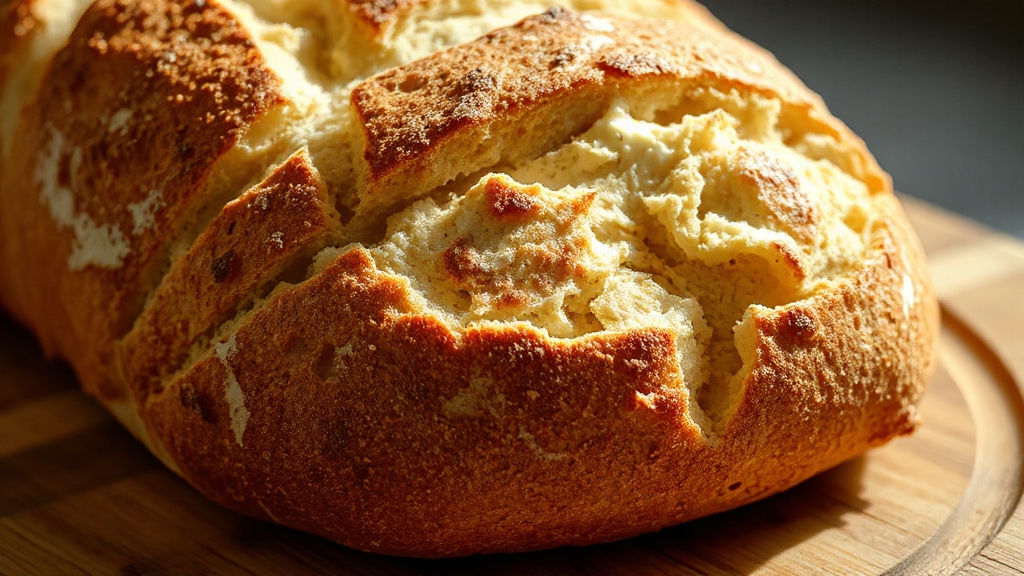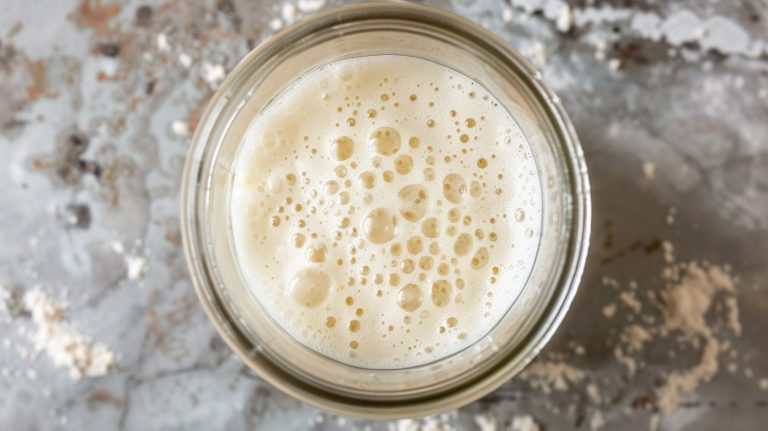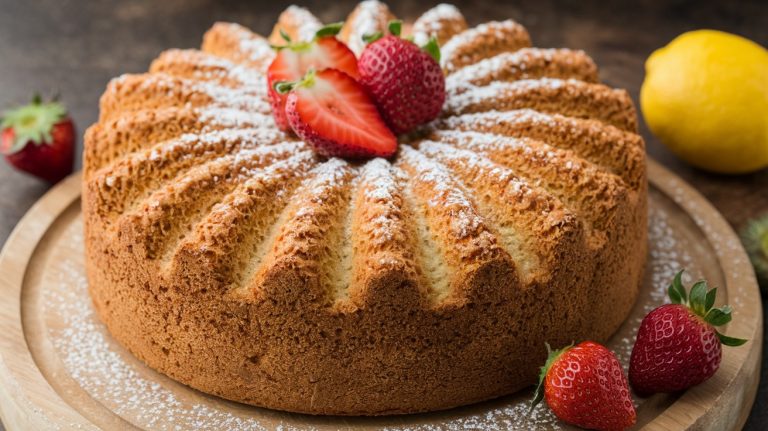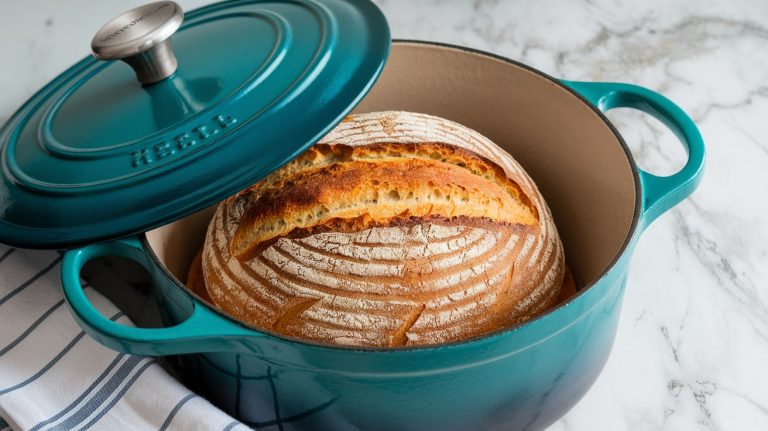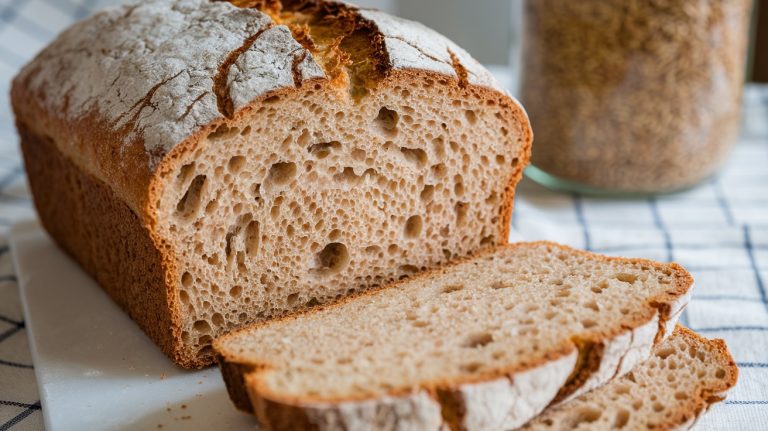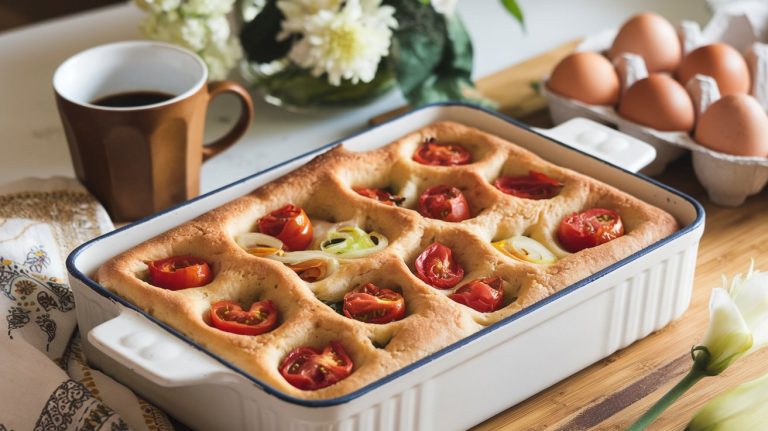Sourdough Cottage Cheese Bread: The Fluffy Marvel
Immerse yourself in making sourdough cottage cheese bread, where you’ll blend the tangy zest of a wild-fermented starter with the creamy protein punch of cottage cheese. Mix 1.5 cups active starter, ¾ cup cottage cheese, and 2-3 cups bread flour with a pinch of salt.
Let it ferment at 70-75°F for 4-5 hours, shaping for a tender, nutrient-packed loaf. You’ll craft a rustic masterpiece with unmatched moisture. Stick around to uncover deeper secrets.
Key Takeaways
- Sourdough cottage cheese bread combines active starter and cottage cheese for a protein-rich, moist loaf.
- Use 1-1.5 cups active starter and 3/4-2 cups cottage cheese for optimal texture.
- Ferment at 70-75°F for 4-4.5 hours to develop flavor and structure.
- Cottage cheese adds up to 15 grams of protein per slice, boosting nutrition.
- Shape and proof overnight in a floured basket for best results.
Benefits of Cottage Cheese in Baking
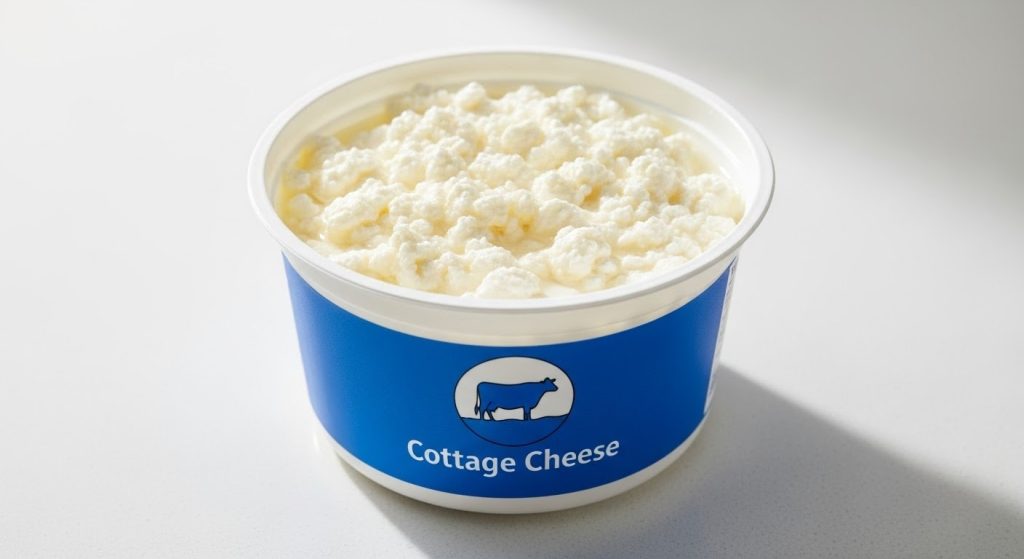
Hey, when you add cottage cheese to your sourdough bread, you’re packing in a serious protein boost that fuels your body with every hearty slice.
You’ll also notice how it transforms the texture, infusing moisture for a tender, soft crumb that’s downright irresistible.
Plus, you’re enhancing the nutritional value, loading your loaf with essential vitamins and minerals for a truly wholesome bite! Additionally, the fermentation process in sourdough, similar to that in mixes like Krusteaz, may lower glycemic index for better blood sugar management.
And, by incorporating cottage cheese, you’re supporting bone health with vital minerals like calcium and phosphorus.
Protein Boost in Bread
While many breads fall short on nutritional value, incorporating cottage cheese into your sourdough recipe can transform it into a protein-packed powerhouse. You’re boosting protein content by up to 15 grams per slice, thanks to cottage cheese’s impressive 10-14% protein by weight. This isn’t just a number—it’s a complete protein with all essential amino acids, supporting muscle repair and satiety.
Dive into the benefits: you’re enriching your bread with bioavailable dairy proteins, plus crucial nutrients like vitamin B12. Cottage cheese outshines many additives, offering a natural, nutrient-dense option without extra fats.
Additionally, its fermentation-friendly properties can enhance the bread’s digestibility by supporting beneficial gut bacteria. Inspired by recipes like cottage cheese cookies, this ingredient also enhances texture naturally.
Moisture and Texture Impact
Let’s shift gears from the protein punch of cottage cheese to its remarkable influence on moisture and texture in your sourdough bread. You’ll notice that cottage cheese, with its high water content, boosts dough hydration, creating a moister, tender crumb that resists dryness.
It curbs moisture loss during baking, extending shelf life by keeping your loaf soft for days. This effect is particularly important as higher moisture content can improve meltability and texture in baked goods, much like in cheeses with elevated water levels.
But beware—too much can make your dough overly wet, challenging gluten formation and handling. Stick to moderate levels, around 7.5%, to maintain volume and a cohesive structure. You’ll love the creamy, rich mouthfeel and open crumb it imparts. Incorporating cottage cheese also enhances the open crumb structure, resulting in those desirable large, irregular holes for an airy texture.
Adjust hydration and mixing to balance this magic, ensuring your bread’s texture shines with every slice!
Nutritional Value Enhancement
As you plunge into the world of sourdough baking, you’ll uncover the incredible nutritional boost cottage cheese brings to your loaves. With just half a cup, you’re adding 14 grams of protein, supporting muscle health and keeping you full longer. It’s low in calories—only 81 per serving—making it a smart choice for weight management.
Beyond that, cottage cheese infuses your bread with essential nutrients like calcium and phosphorus for strong bones, plus B12 and selenium for immune support. Pair it with sourdough’s fermentation, and you’ve got potential digestive benefits from probiotics.
Its high protein content, especially casein, also aids in overnight muscle synthesis. Additionally, the fermentation process in sourdough, enhanced by a well-maintained starter, can further improve nutrient availability through microbial diversity.
You’ll also love the rich flavor it adds without extra sugar or salt. Transform your baking—make every slice a powerhouse of nutrition and taste!
Essential Ingredients Breakdown
Diving straight into the heart of sourdough cottage cheese bread, you’ll find that the magic lies in its carefully chosen ingredients, each playing an essential role in crafting a loaf that’s both flavorful and nutritious.
Start with 2-3 cups of flour—whether it’s King Arthur Bread or whole grain spelt—for structure and fiber. Your active sourdough starter, about 1-1.5 cups, brings that tangy leavening punch. For an even bake, maintaining a consistent temperature control is key to achieving the perfect crust and texture.
Then, 3/4 to 2 cups of low-fat cottage cheese adds moisture and a protein kick, while 1-2 egg whites ensure a light, airy crumb. Don’t skimp on salt for flavor, and adjust water, roughly 3/4 to 1 cup, for hydration. Additionally, incorporating vital wheat gluten can significantly enhance dough elasticity.
Optional herbs like dill or vital wheat gluten can elevate texture and taste!
Step-by-Step Preparation Guide
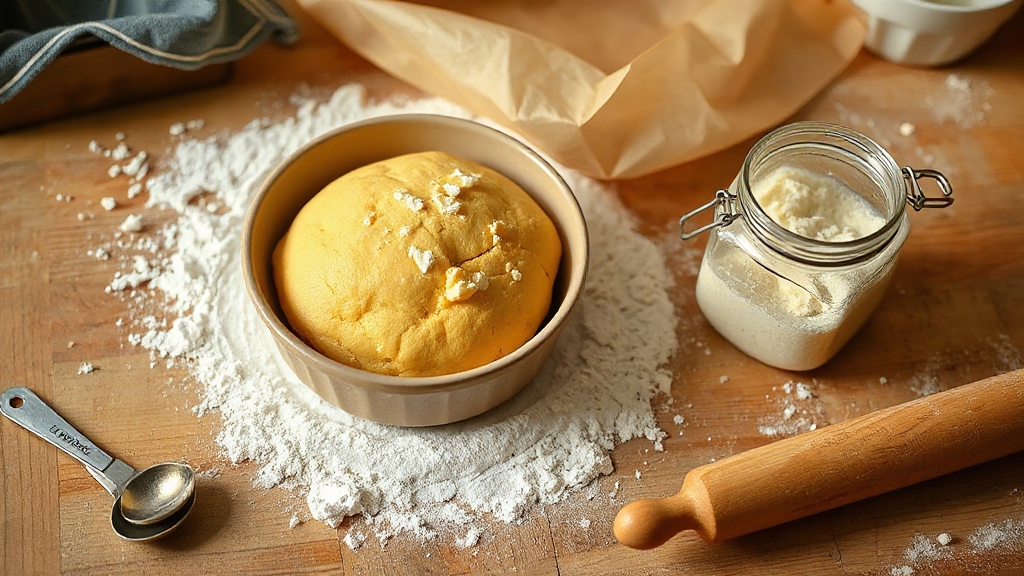
Get ready to craft your Sourdough Cottage Cheese Bread with precision, starting with the starter activation process where you’ll blend your vibrant sourdough starter into a smooth mix of water, cottage cheese, and egg whites to kickstart fermentation.
Next, mix your dough ingredients meticulously, combining the liquid base with bread flours and essential wheat gluten to build a strong, elastic structure that’s prepared to rise. Ensure you incorporate the high dill content balanced for flavor to enhance the bread’s distinctive taste. Remember that traditional sourdough is often vegan-friendly by nature, aligning with dietary preferences if adapted without animal-derived ingredients.
Finally, guide your dough through fermentation and proofing, watching enthusiastically as it transforms over hours with careful rests and folds, building flavor and texture with every step.
Starter Activation Process
Before you begin the rewarding journey of crafting sourdough cottage cheese bread, let’s ignite the life of your starter with meticulous care. Grab a clean glass container and feed your starter with equal parts all-purpose flour and room-temperature water.
Stir with enthusiasm, then wait 6 to 24 hours, watching for bubbles and a gentle rise. Remember, maintaining a consistent feeding schedule is key to a healthy and active starter consistent feeding schedule. If your starter has been refrigerated, allow it to reach room temperature before feeding to ensure optimal activity.
Test its readiness by dropping a spoonful into water—if it floats, you’re set! If there’s no activity, don’t fret; add more flour and water, and patiently repeat.
Imagine the process vividly:
- Stirring a creamy blend, awakening tiny microbial warriors.
- Peering passionately for frothy bubbles dancing on the surface.
- Feeling the starter’s warmth, alive under your fingertips.
- Witnessing its slow ascent, a sign of vibrant life.
Mixing Dough Ingredients
With your sourdough starter bubbling with life, it’s time to blend the ingredients that’ll shape your cottage cheese bread into a masterpiece. Start by pureeing cottage cheese with egg whites until silky, then mix in water, neutral oil, and a touch of honey for depth. Stir in your lively starter with a hand blender for perfect emulsification.
Next, combine bread flour, a pinch of vital wheat gluten, and salt with a Danish dough whisk until a shaggy mass forms—no dry spots allowed! Add herbs or seeds for flair, then cover and rest the dough for 20-30 minutes to hydrate. This resting period allows the high moisture content from cottage cheese and egg whites to fully integrate with the flour, promoting better gluten development.
For safer and cleaner handling of sticky dough, consider wearing disposable nitrile gloves to maintain hygiene and improve grip during the mixing process.
| Ingredient | Purpose |
|---|---|
| Cottage Cheese & Egg | Moisture and richness |
| Bread Flour & Gluten | Structure and elasticity |
| Herbs/Seeds | Flavor and texture |
Fermentation and Proofing

As your sourdough cottage cheese bread dough comes together, immerse yourself in the essential stage of fermentation and proofing with enthusiastic anticipation. Let it ferment at 70-75°F for 4 to 4.5 hours, activating the starter’s yeast and bacteria, or opt for a 7-hour room temp rise. This extended fermentation allows for the development of complex, tangy flavors unique to sourdough bread.
For deeper flavor, retard it in the fridge for 9 hours post-initial ferment. Perform stretch-and-fold cycles up to 4 times, strengthening gluten gently. Remember that sourdough’s natural fermentation process enhances digestibility and supports gut health, making this bread a nutritious choice.
Shape with precision, stretching into a rectangle, folding, and tightening into a round before a final overnight proof in a floured basket.
Imagine the process vividly:
- Yeasty aroma wafting as dough doubles in size.
- Sticky texture clinging to fingers during folds.
- Smooth, taut surface after shaping.
- Chilled dough awaiting its bake.
Tips for Perfect Texture and Flavor
While crafting the perfect sourdough cottage cheese bread, you’ll find that texture and flavor hinge on a few critical techniques. First, nail the hydration level; a wetter dough keeps that light, fluffy crumb you’re craving.
Balance cottage cheese and egg whites with flour and salt meticulously for a protein-packed, harmonious bite.
Don’t overwork the dough—mix by hand and use gentle stretch-and-fold techniques to build elasticity without toughness. Let it rest adequately to relax and develop structure. Remember to incorporate chives or green onions for a burst of fresh, savory flavor.
Control fermentation temperature meticulously; a consistent warmth ensures even rising and deep flavor.
Finally, choose your flour wisely—whole wheat or nine-grain adds nutty depth and nutrition.
Creative Variations and Pairings
Immerse yourself in the world of sourdough cottage cheese bread with an adventurous spirit, and you’ll uncover a treasure trove of creative variations and pairings that elevate this humble loaf to new heights. Experiment with herbs like dill and chives for a tangy depth, or mix in whole grain flours for a nutty, hearty bite. Incorporate cottage cheese for a moist, flavorful crumb that enhances the bread’s unique texture and taste.
Pair your creation with smoked salmon and cream cheese, letting the bread’s subtle tang shine, or drizzle honey for a sweet-savory balance.
Imagine biting into:
- A warm slice speckled with green chives, bursting with garden-fresh aroma.
- A multigrain loaf, rustic and earthy, dense with wholesome texture.
- A savory piece topped with creamy salmon, a luxurious brunch delight.
- A subtly sweet bite, honey-glazed, teasing your taste buds.
Frequently Asked Questions
How Long Can Sourdough Cottage Cheese Bread Be Stored?
Hey, you’re curious about how long you can store that delightful homemade bread, right? Jump into proper storage, and you’ll keep it fresh for up to 3 days at room temperature in a cool, dry spot.
Push it to 5 days with care, using a bread box or paper wrapping. Don’t refrigerate—it dries out faster!
For longer, freeze it airtight for up to 2 months. Keep savoring every bite.
Can I Freeze Sourdough Cottage Cheese Bread?
Hark, as if from a medieval feast, let’s conquer the art of preservation! You can absolutely freeze your bread to keep its soul alive. Make sure it’s fully cooled, wrap it tight in foil, and seal it in a freezer bag.
Slice it first if you’d like, flash-freezing on a tray to avoid sticking. Don’t let time steal its essence—store it with zeal for months of delight.
Is This Bread Suitable for Gluten-Free Diets?
Hey, you’ve gotta know if this bread fits a gluten-free diet, right? Explore the details with me! Unfortunately, if it’s made with wheat flour, it’s not safe for you.
Even with fermentation lowering gluten slightly, it’s nowhere near the gluten-free threshold. Don’t risk it if you’ve got celiac disease or severe sensitivity.
Stick to alternatives using certified gluten-free ingredients, and always check labels passionately to protect yourself.
What Equipment Is Best for Baking This Bread?
Imagine wielding the tools of ancient bakers, crafting perfection with every loaf. You’ve gotta equip yourself with the best for baking magic!
Grab a Challenger Bread Pan; its heavy-duty cast iron traps steam like a dream, ensuring epic crust and rise. Don’t skimp—use a Lodge Dutch Oven as a stellar alternative for heat retention.
Add a banneton for shape, and you’re set to create masterpieces with every bake.
How Does Altitude Affect Baking This Bread?
Hey, let’s plunge into how altitude messes with your baking game! You’ll notice lower air pressure and drier conditions speed up fermentation, making dough sticky and prone to collapse.
Hydration needs tweaking—cut it back a bit to avoid spreading. Shorten proofing times, or you’re risking a dense crumb.
Strengthen that gluten with high-protein flour, and keep a tight grip on humidity. Nail this, and you’ve got magic.
Bake the Best: Sourdough Cottage Cheese Bread for Flavor Seekers
You’ve crafted your sourdough cottage cheese bread, a masterpiece of tangy zest and creamy richness. But wait—what’s that aroma wafting from your oven?
It’s the golden crust whispering secrets of crisp perfection. Slice into it, hear the crackle, and taste the moist, airy crumb.
Will it pair with honey or savory jam? The choice is yours, but hurry—each warm bite beckons, promising a flavor adventure you can’t resist.

